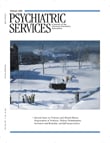Helping the Addict You Love: The New Effective Program for Getting the Addict Into Treatment
Have you ever been called to the emergency department to consult on a patient seeking direct admission to a residential drug program? Or tried to calm a frustrated family member who will not accept your contention that there is no standard inpatient detoxification plan for their loved one's cocaine addiction? Helping the Addict You Love offers useful information to patients and their families that may provide guidance in obtaining appropriate care and may spare them time and effort in the process.
Helping the Addict You Love is a valuable guide for those dealing with a loved one suffering from addiction. In the introduction, Westreich describes his method for guiding friends and family as they help loved ones seek treatment. What he calls "creative engagement" focuses on "solving the immediate problem of getting help for your addicted loved one, doing whatever you can to resolve it, and continuing to work on it until you have."
Part I shows readers how to recognize addiction in their loved ones and to combat the defense mechanisms employed by addicted patients. Westreich explains addiction according to the chronic disease model while presenting alternative models. Part II details strategies for helping addicted loved ones get treatment, and Part III describes available treatment modalities. Part IV addresses addictions in special populations, such as adolescents and the elderly.
This informative guide has many attributes that make it an excellent primary resource for learning about addiction. Anecdotes and summary boxes at the end of each chapter will assist readers in retaining new information. Comprehensive, albeit brief, overviews of the different classes of drugs and various treatment strategies are geared toward readers without previous exposure to these topics. I especially enjoyed sample conversations that demonstrate common ways addicted patients explain their use of substances. For those dealing with addiction for the first time, such conversations can be befuddling, so these examples may serve as preparation while offering potential responses and questions to ask.
Westreich outlines the differences between creative engagement and the popular ideas of tough love and intervention. He chafes at the tough love idea of letting addicted persons fend for themselves and advocates for repeated attempts to engage them. Similarly, he favors multiple attempts to coerce an addicted person into treatment, as opposed to a one-time, surprise intervention.
Although it is unfortunate that Westreich chooses to use the pejorative term "addict" in the title, the book fills an important niche as a first book for those facing a loved one with an addiction. With mental health emergency department visits on the rise and substance use disorders constituting the largest subgroup of these visits ( 1 ), it is imperative that mental health providers educate the public about substance use disorders and their appropriate treatment. Helping the Addict You Love is the kind of book that can assist us in doing that.
1. Larkin GL, Classen CA, Emond JA, et al: Trends in US emergency department visits for mental health conditions, 1992 to 2001. Psychiatric Services 56:671–677, 2005Google Scholar



